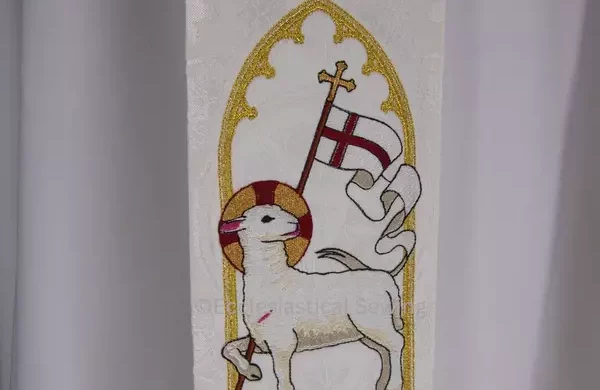
The Agnus Dei, translating to “Lamb of God,” represents Jesus Christ’s sacrificial offering for humanity’s sins, embodying innocence and purity. Rooted in scripture, this symbol reflects Christ’s triumph over death and sin, inspiring believers to live by principles of love and forgiveness.
Like this:
Like Loading...
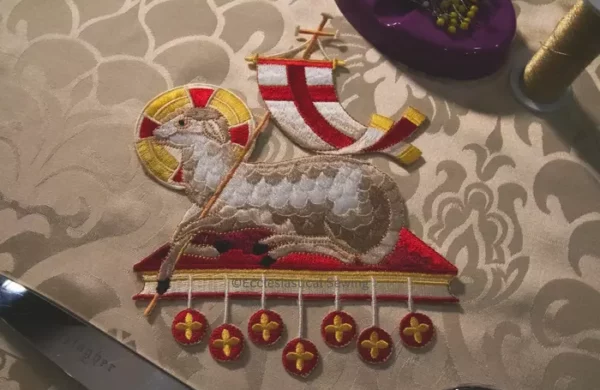
The banner of victory symbolizes Christ’s triumph over sin, featuring a Latin cross on a white banner with a red cross. Combined with the Agnus Dei, representing His sacrifice, it deepens religious significance. This fusion embodies Christ’s dual role as sacrificial lamb and victorious king, inspiring believers with themes of courage and hope against adversity.
Like this:
Like Loading...
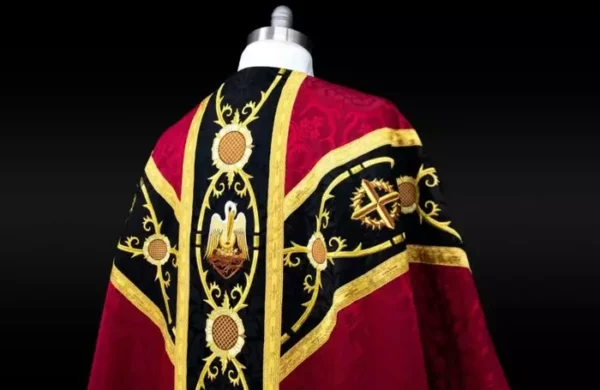
The church symbol of the pelican was first used in the British 12th century as the bird was believed to be a perfect example of the great sacrifice that our Lord made for us. It awakens the spirit of charity towards others and reminds us of the generosity of our Lord, the great redeemer. Therefore, the image of the pelican is a strong reminder that ties us to our faith and a universal symbol that joins the Christian community together.
Like this:
Like Loading...
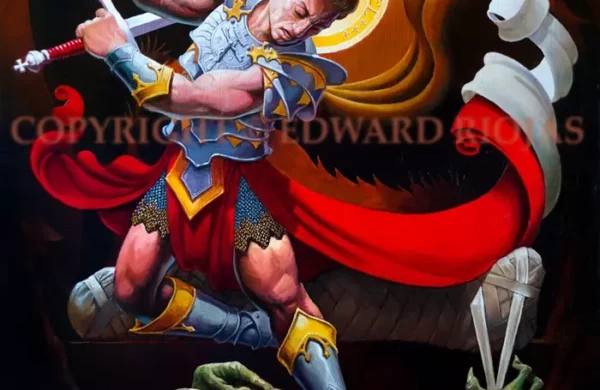
Looking for something that will be enjoyed by your special father every day? Please consider selecting the perfect gift of a Giclée print. Giclée prints are the archival standard used by museums and galleries to reproduce fine art. The images are printed on Hahnemuehle fine art paper and are ready for framing to suit your decor.
Like this:
Like Loading...
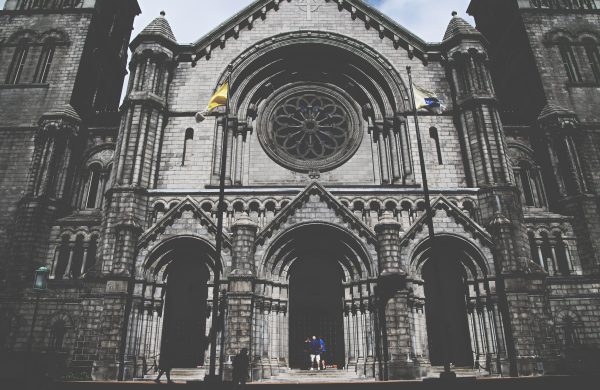
You might find the Cathedral Basilica of St. Louis, located in Missouri, The seat of the Diocese of St. Louis, this magnificent cathedral is dedicated to St. Louis, King of France. Louis IX is the only French king to be canonized, and the reign of Louis IX was known for having a close association between Church teaching and civil society.
Like this:
Like Loading...
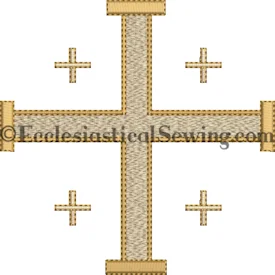
Ecclesiastical Sewing uploaded new machine embroidery designs online in the hopes that these might provide peace and a sense of usefulness to someone as they create something beautiful for their house of worship.
Like this:
Like Loading...
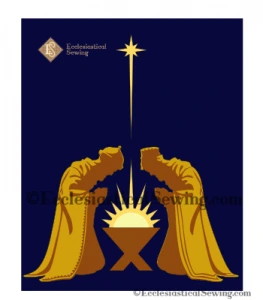
Epiphany is a feast day in the Western church, white vestments and paraments are used. Sometimes gold is substituted. There aren’t any specific Epiphany symbols, but there are often representations of the Three Kings elsewhere in churches.
Like this:
Like Loading...

Christmas rose, also known as the Glastonbury Rose. This is a little white flower that grows in northern Europe during the winter. Legend has it that the Christmas rose is of miraculous origin. As the Christmas rose represents purity, it has often been carved into confessionals as a five-petal flower: the penitent walks in a guilty sinner, and out with their purity restored. It also appears in plenty of medieval heraldry, among other uses.
Like this:
Like Loading...

From the very beginning, Christians have celebrated Advent with some antiphons like O Radix Jesse that encapsulate the Old Testament prophecies fulfilled in the Incarnation. “O Radix Jesse,” translated in English as “O Root of Jesse,” celebrates the royal descent of Jesus through His mother Mary.
Like this:
Like Loading...
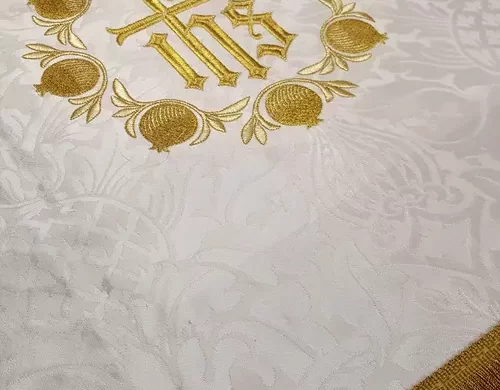
Ecclesiastical Sewing introduced a design collection entitled Dayspring. The collection features timeless and elegant designs created by our liturgical artist friend, Edward Riojas. The collection features a variety of design themes that symbolize both the Nativity of Christ and His Resurrection. The designs were gold threads stitched on white paraments and vestments, featuring designs like the IHC monogram with a rising sun, the Pomegranate design, and several others found in our various collections.
Like this:
Like Loading...

If your travel plans include a visit to Minnesota, this is an Ecclesiastical Arts Needlework Collection worth seeing. Many of the pieces in the collection are becoming fragile with age, and so, this may be the last exhibit for some of the pieces in the collection. The rose copes shown in the above photo are embroidered on a lovely white silk ground fabric. The piece is close to 100 years old or more.
Like this:
Like Loading...
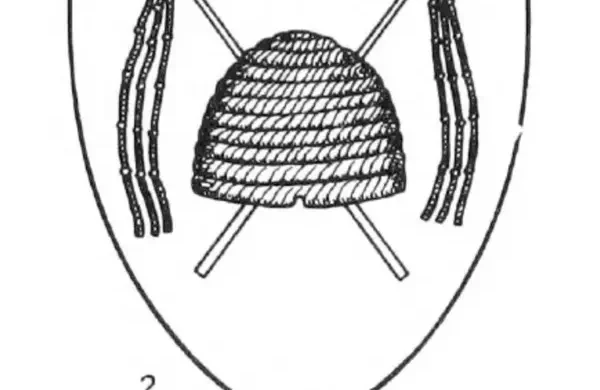
Born as Aurelius Ambrosius in 334 A.D., the man we know as St. Ambrose grew up in Gaul where his father held a high post as prefecture. It is said that a swarm of bees visited the infant Ambrose, landing upon his eyes and lips. This tradition claims to be the source of Ambrose’s ability later in life to speak in honeyed, caring words. So, the beehive has become the symbol most frequently associated with St. Ambrose because it is a symbol of eloquence. The symbol for St. Ambrose relate to the ex-communication of Emperor Theodosius for his massacre of the people of Thessalonica.
Like this:
Like Loading...
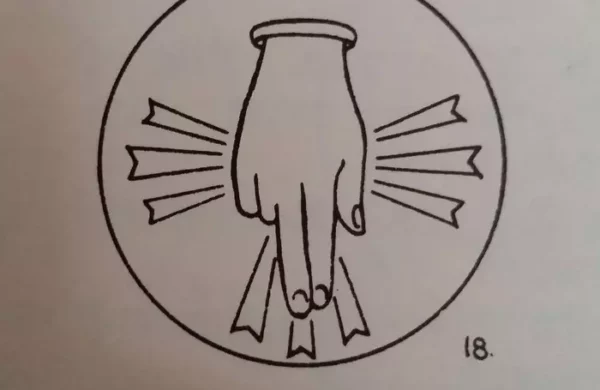
Each renowned saint has his or her own symbol in ecclesiastical sewing. A church that is named after a blessed saint can place that saint’s symbol on a piece of ecclesiastical vestment. All Saints Day, is the celebration of all of the Christian saints. During the mass persecutions, saints were martyred and there was no way to keep track of them all and mark each day as their own saint’s day. And so All Saints Day is the day we remember them. We decorate our churches in white, which reminds the feasting eyes of the congregation of the triumph of the saints, washed of their sins and made as white as snow by the all-availing sacrifice of Christ Our Saviour.
Like this:
Like Loading...
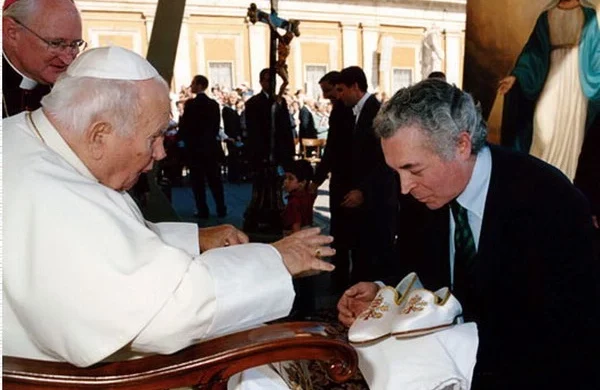
Ecclesiastical Footwear? C0113517921/[/embed] One can only imagine the honor of making a special pair of shoes for the Pope. These truly are a work of art. I hope you have… Read more Ecclesiastical Footwear? →
Like this:
Like Loading...
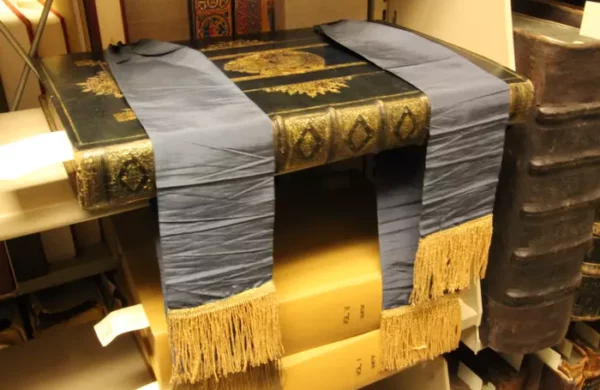
This Book of Prayer is a part of the Collection of Rare Books at the Concordia Seminary Library on the LC-MS Seminary Campus in St. Louis, MO. The Rare Books Library houses a unique collection of rare volumes relating to Church History, specifically, Lutheran Church History
Like this:
Like Loading...
















You must be logged in to post a comment.